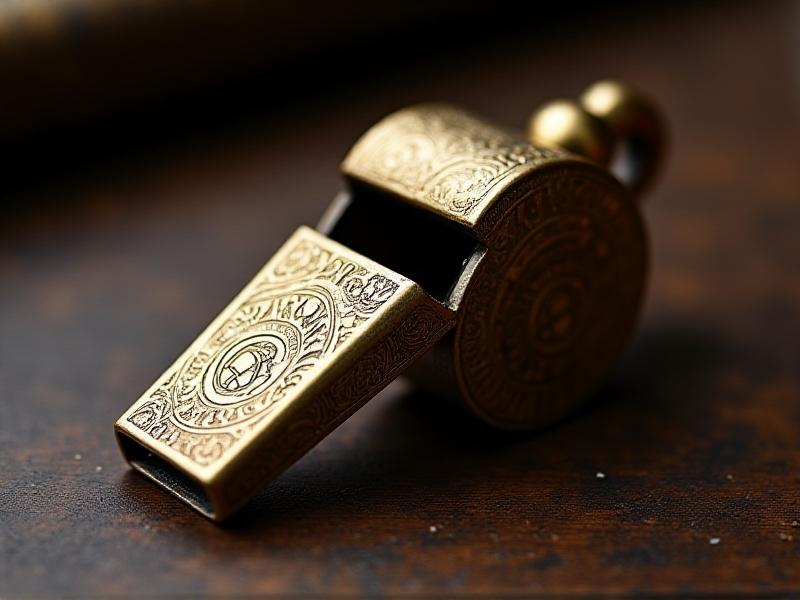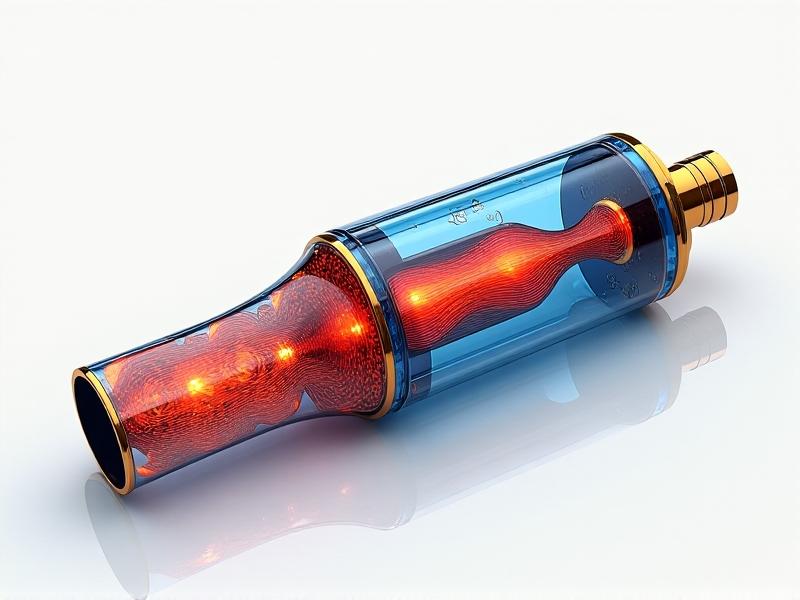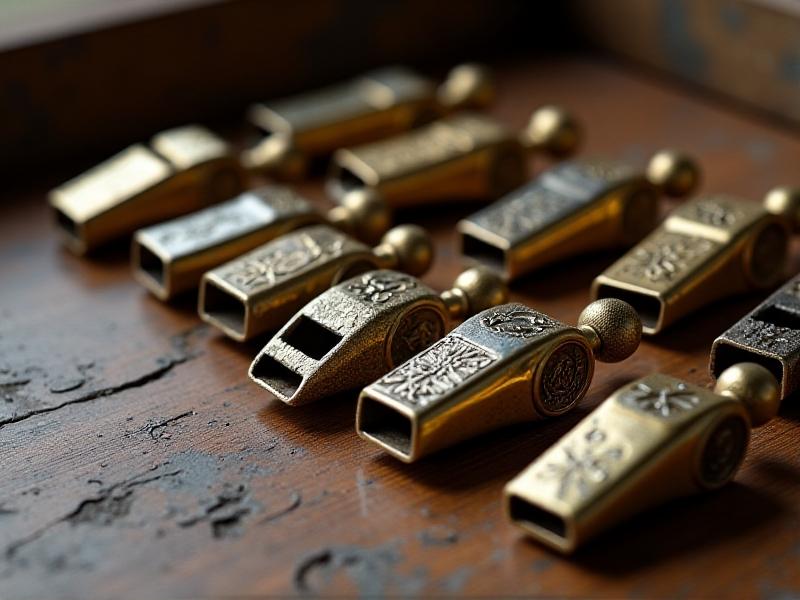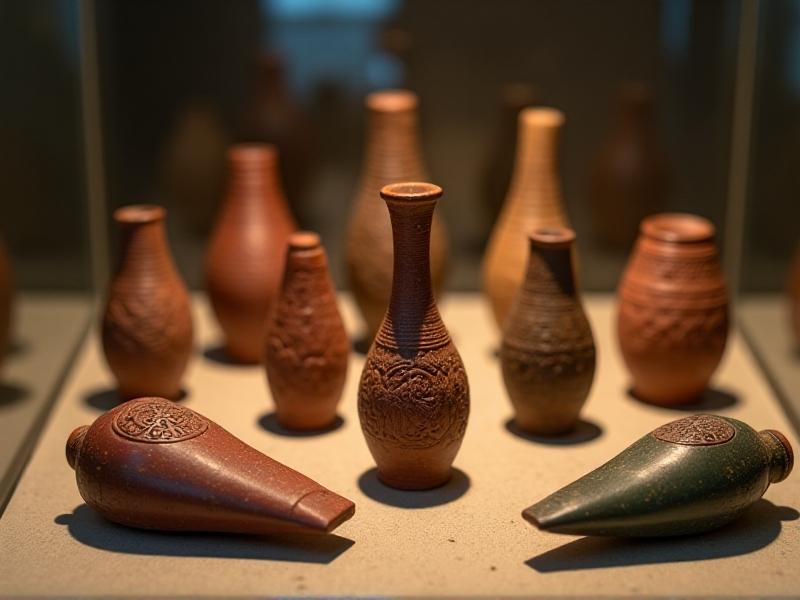Tracking Provenance: Documenting 19th-Century Whistle Histories
The Significance of Whistles in the 19th Century
In the 19th century, whistles were very crucial as they were vital instruments in many fields including industrial signaling, nautical navigation, and law enforcement. Their simple yet effective design made them indispensable for communication over long distances, especially in an era before electronic communication. The 19th century witnessed the mass production of whistles, thanks to advancements in metallurgy and manufacturing techniques. This period also saw the emergence of specialized whistles tailored for specific purposes, such as the Acme Thunderer for sports referees and the pea whistle for police officers.
Understanding the provenance of these whistles—where they were made, who used them, and how they were used—provides valuable insights into the social and technological history of the time. Documenting their histories involves tracing their origins, examining their materials, and exploring their cultural significance. This process not only preserves the legacy of these objects but also enriches our understanding of the past.

The Art of Crafting 19th-Century Whistles
The craftsmanship behind 19th-century whistles is a testament to the ingenuity and skill of the artisans of the time. These whistles were often made from brass, a durable and resonant material that produced a clear, piercing sound. The manufacturing process involved precision engineering, with components such as the mouthpiece, pea, and body carefully assembled to ensure optimal performance. Engravings and markings on the whistles often indicated the manufacturer, the year of production, and sometimes the intended use.
Collectors and historians today value these whistles not only for their functionality but also for their aesthetic appeal. The intricate designs and attention to detail reflect the cultural and artistic trends of the 19th century. By studying these whistles, we can gain a deeper appreciation for the craftsmanship and innovation that defined this era.

Whistles in Law Enforcement: A Historical Perspective
In the 19th century, whistles became a symbol of authority and order, particularly in law enforcement. Police officers relied on whistles to signal for backup, alert the public to danger, and maintain order in crowded urban areas. The distinct sound of a police whistle was instantly recognizable and could cut through the noise of bustling streets, making it an effective communication tool.
The introduction of standardized whistles, such as the Metropolitan Police Whistle, marked a significant development in policing history. These whistles were designed to produce a consistent sound, ensuring clear communication among officers. Documenting the use of whistles in law enforcement provides a fascinating glimpse into the evolution of policing and the challenges faced by officers in the 19th century.

Maritime Whistles: Navigating the Seas
Whistles were also crucial in maritime navigation during the 19th century. Ships coordinated maneuvers in busy harbors, signaled distress, and communicated with one another via whistles. The development of steam-powered ships led to the creation of powerful steam whistles, which could be heard over long distances and in adverse weather conditions.
These maritime whistles were often larger and more robust than their land-based counterparts, designed to withstand the harsh conditions of the sea. By studying these whistles, we can learn about the challenges of maritime communication and the technological advancements that shaped the shipping industry in the 19th century.
Industrial Whistles: The Sound of Progress
Particularly in factories and railroads, the Industrial Revolution significantly changed how whistles were used. Whistles were used to signal the start and end of shifts, alert workers to emergencies, and coordinate the movement of trains. The loud, piercing sound of industrial whistles became synonymous with the hustle and bustle of industrial progress.
Often installed on structures or trains, these whistles were designed for best sound projection. By examining industrial whistles, we can gain insights into the working conditions and technological innovations of the 19th century, as well as the impact of industrialization on society.
Collecting and Preserving 19th-Century Whistles
Today, 19th-century whistles are highly sought after by collectors and historians. These objects are not only valuable for their historical significance but also for their craftsmanship and design. Many collectors look for whistles with unusual engravings, uncommon materials, or ties to famous people or events.
Preserving these whistles involves careful handling, storage, and documentation. Museums and private collectors play a crucial role in safeguarding these artifacts for future generations. By studying and preserving 19th-century whistles, we can ensure that the stories and innovations of the past continue to inspire and inform us today.
The Cultural Legacy of 19th-Century Whistles
The cultural legacy of 19th-century whistles extends beyond their practical uses. These objects have become symbols of authority, progress, and communication, often featured in literature, art, and popular culture. The sound of a whistle can evoke a sense of nostalgia, reminding us of a time when these simple instruments played a vital role in everyday life.
By exploring the cultural significance of whistles, we can better understand how they shaped the social fabric of the 19th century. Their enduring legacy is a testament to the ingenuity and creativity of the people who designed, crafted, and used them.








